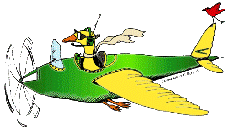Bird Strike Committee Proceedings
Date of this Version
10-24-2002
Document Type
Article
Abstract
Forested wetlands provide attractive roost sites for black vultures (Coragyps atratus) and turkey vultures (Cathartes aura). Vultures entering and departing roosts, however, can create hazardous conditions for pilots arriving and departing nearby airports because vultures often use the same air column as aircraft. This was the case for Eglin Air Force Base and co-located Okaloosa Regional Airport in Niceville, Florida where 260 vultures roosted in nearby Turkey Creek Nature Trail. We evaluated the effectiveness of suspending a taxidermic vulture effigy in the roost, augmented by periodic use of a handheld laser management options to alleviate these aviation safety problems. The laser was used during first light and dusk on the 2nd and 3rd treatment day. Vulture numbers decreased 41% within 3 days and 100% 4 days after installation of the stimulus. Hanging a vulture effigy from a location within the roost creates an unfavorable roosting environment for vultures and offers a simple, effective means to manage problem roosts. The use of the handheld laser further decreases the desirability of the roost and quite possibly the time it takes to disperse the roost. In this study, dispersal of the vulture roost effectively resolved a potentially dangerous situation. In other cases however, dispersal of roosting birds may not decrease bird strike hazards.


